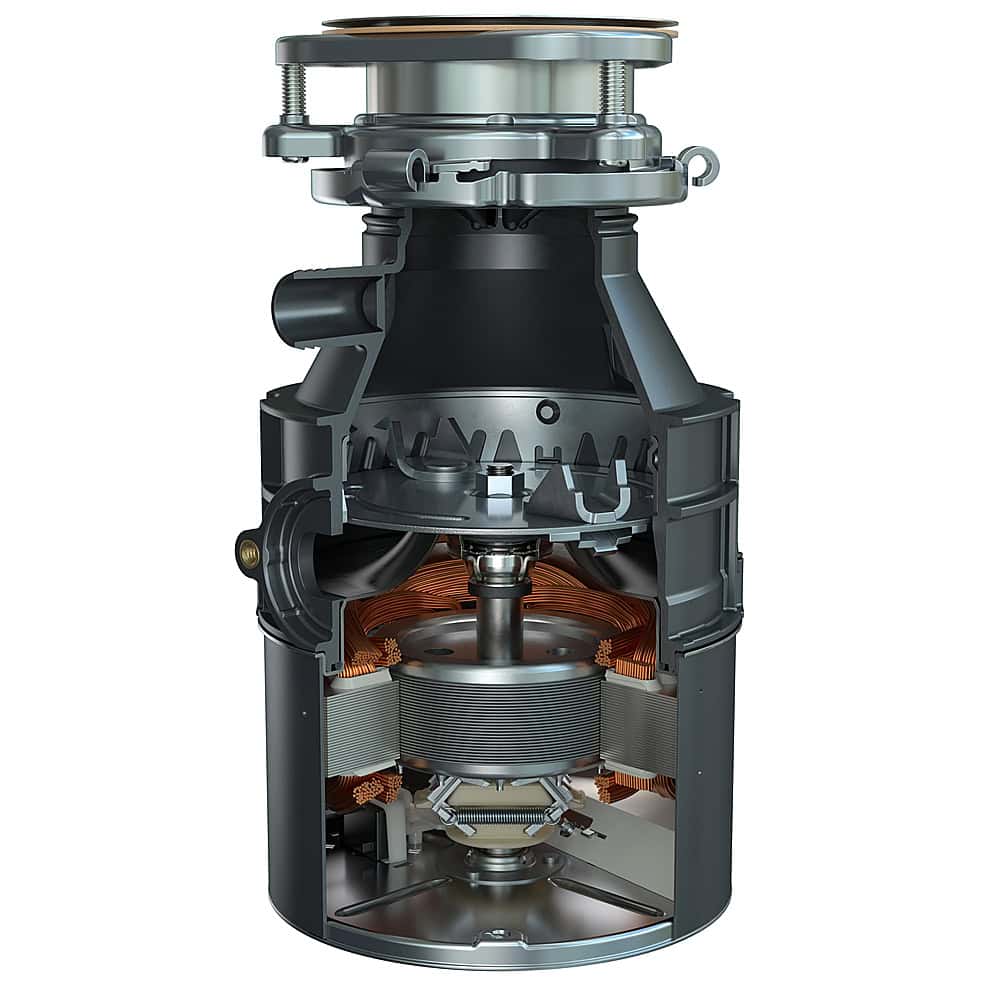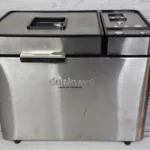A garbage disposal is a machine that is located under your sink and its main function is to grind up food scraps. When you wash dishes, small bits of food often go down the drain. The garbage disposal ensures that these bits don’t cause a clog by breaking them down into very small pieces. The water from the faucet then helps flush these bits through your plumbing, which helps to keep your kitchen pipes clean.
To understand how a garbage disposal works, it is important to know what’s inside. When you put food into the disposal and turn it on, a plate spins around very fast. This plate has small, blunt parts that push the food against a grind ring. The ring breaks down the food into tiny pieces. Contrary to popular belief, there are no sharp blades involved in this process. Once the food is ground up, it is washed away into the plumbing, keeping your kitchen running smoothly.
Demystifying the Garbage Disposal: From Kitchen Scraps to Liquid Plumbing
The garbage disposal is a handy kitchen appliance, but have you ever wondered how it works? It’s not magic, but it does involve a bit of engineering and some powerful forces.
Inside the Grinder
- Grinding Chamber: This is where the action happens. It’s a cylindrical space with a spinning plate at the bottom.
- Impellers (Not Blades!): Contrary to popular belief, there are no sharp blades. Instead, blunt metal lugs called impellers are attached to the spinning plate.
- Grind Ring: A stationary ring with teeth-like protrusions surrounds the chamber.
The Process
- Feeding the Beast: Scraps enter through the sink drain into the chamber.
- Centrifugal Force: When you turn on the disposal, the motor spins the plate rapidly. Centrifugal force flings the food waste outward against the grind ring.
- Grinding Action: The impellers push the waste against the stationary grind ring, effectively shredding it into smaller pieces.
- Water’s Role: A continuous flow of cold water helps move the ground waste through the chamber and out into the drain.
Safety First!
| Safety Tips | Why It Matters |
|---|---|
| Always Run Cold Water | Cold water helps solidify fats and oils, preventing clogs and keeping the disposal running smoothly. |
| Use it Regularly | Running the disposal frequently helps prevent corrosion and ensures that seals remain lubricated. |
| Avoid Hard or Fibrous Materials | Bones, fruit pits, coffee grounds, and fibrous vegetables can damage the blades or cause jams. |
| Use a Disposal Cleaner | Periodically cleaning the disposal with baking soda and vinegar or a commercial cleaner helps eliminate odors and keeps it running smoothly. |
| Turn Off Before Reaching In | Never put your hand into the disposal, even if it’s off. Always use tongs to remove any obstructions. |
Troubleshooting Common Issues
If your disposal isn’t working properly, try these simple fixes:
- Reset the Overload Protector: If the motor overheats, it will automatically shut off. Wait a few minutes for it to cool down, then press the reset button usually located on the bottom of the unit.
- Check for Jams: If you hear a humming sound but no grinding, turn off the disposal and unplug it. Carefully remove any objects that might be obstructing the blades.
- Call a Plumber: If the issue persists, contact a plumber for professional assistance.
Design and Operation of Garbage Disposals
Garbage disposals are common kitchen appliances that grind food waste so it can pass through plumbing. They are easy to use and help keep sinks clear.
Basic Components and Their Functions
Motor: This is the heart of the disposal. It powers the unit.
Impeller Plate and Blades: There are no actual blades. Instead, impellers or lugs on the impeller plate spin and push waste outward.
Grinding Chamber: The space where grinding takes place. It has a shredder ring that breaks down the waste.
Hopper Chamber: This upper part catches the food waste when it’s tossed into the sink drain.
Flywheel: Connected to the motor, it turns the impeller plate.
Sink Drain: The entry point for waste. It leads into the garbage disposal.
Power: Most units use home electricity to run. They have a switch to turn them on and off.
The Process: From Waste to Drain
- Activation: A switch turns on the power to start the motor.
- Grinding: As the motor runs, it spins the flywheel. This moves the impellers.
- Forcing Waste: The food scraps hit the shredder ring. The spinning parts and the ring crush the waste.
- Flushing Out: Water from the faucet helps push the tiny particles down the drain.
Garbage disposals are installed under the sink. They connect to the sink drain. They must be installed carefully to work well and stay safe. Always follow the manufacturer’s guide or hire a professional for installing.
Maintenance, Troubleshooting, and Safety
Proper care ensures a garbage disposal runs well and lasts longer. This section reveals how to maintain it, fix common issues, and stay safe.
Routine Cleaning and Maintenance
Regular Cleaning
- Run disposal with cold water for 1 minute.
- Clean every two weeks with vinegar and baking soda.
Long-Term Maintenance
- Sharpen blades with ice cubes and salt.
- Freshen with lemon or lime pieces.
Dealing with Clogs and Jams
For a clogged garbage disposal:
- Turn off the power.
- Use a tool, not hands, to remove objects.
Resetting after a jam:
- Find the reset button on the unit.
- Press it after clearing a jam and turning power off.
Safety Tips and Proper Usage
To stay safe:
- Never put hands in a disposal unit.
- Keep hard objects out to prevent jams.
Proper Usage:
- Cut waste into small pieces.
- Avoid grease and expandable foods like pasta and rice.
In case of electrical issues:
- Check your kitchen circuit breaker.
- Ensure the unit is hardwired properly.
Frequently Asked Questions
This section covers common queries about garbage disposal units. It explains how they work, maintenance, what to avoid, troubleshooting, safety, and blade replacement.
What is the principle behind the operation of a garbage disposal unit?
A garbage disposal works on basic physics. It has a plate that spins fast. When you turn it on, food on the plate hits against the sides and breaks apart. Water washes the bits away.
What steps should be followed to maintain a garbage disposal properly?
Keep the disposal clean by running water through after use. Always use cold water during grinding. This helps to keep the unit in good shape.
Are there specific items that should not be processed by a garbage disposal?
Yes. Don’t put in hard items like bones. Avoid fibrous foods like celery. Keep out oily greases and coffee grounds. These can block the disposal.
How can one troubleshoot a non-functioning garbage disposal?
Check if it’s plugged in first. Then see if a reset button under the unit can fix it. If not, turn off the power and look for clogs. Call a pro if needed.
What safety measures should be observed when using a garbage disposal?
Never put fingers inside a garbage disposal. Make sure it is off when not in use. Use long tools, not hands, to remove anything stuck in it.
How often should garbage disposal blades be replaced for optimal performance?
Blades don’t often need replacing. They last a long time. But if you notice it’s not grinding well, have a professional check if you need new blades.







